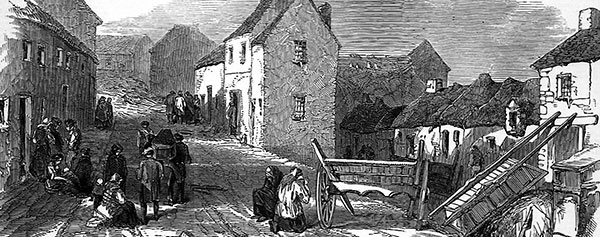By Fiona Fitzsimons
In the last generation, the microcredit movement was conceived as a solution to world poverty. The idea was simple: give poor borrowers in developing countries reliable access to credit to fund their business needs. Borrowers made regular, frequent payments, at low interest rates to cover administrative costs, so the whole enterprise was sustainable.
In fact, microcredit has a long history. In Europe medieval communities had ‘rent-a-cow’ schemes and offered low-interest loans to the poor, literally providing ‘seed capital’, whilst in Dublin in the 1720s Jonathan Swift, dean of St Patrick’s Cathedral, set up a revolving loan fund for honest tradesmen fallen on hard times.
Over the following century, many similar poverty loan funds were created in Ireland, all working independently. Between 1778 and 1838, legislative reforms transformed the gallimaufry of funds from charities into quasi-banks and from local to large-scale organisations. At their peak in 1844 the loan funds lent to approximately 20% of all households in Ireland. The largest organisation was the Irish Reproductive Loan Fund Institution (RLFI), accounting for 100 local funds, or about a quarter of the whole.
The Irish RLFI was founded in London in 1822, with capital of £55,000, ‘for the purpose of making small loans at interest to the industrious poor’. The endowment was shared between local funds, ‘topped up’ by donations, and, over time, retained profits from interest charged.
The RLFI funds operated independently in their local districts, answerable only to their board of directors in London. Loans were given without collateral, but every borrower had to have two guarantors to co-sign the loan papers. Where borrowers defaulted on loans, the funds had property rights over their (the defaulter’s) and their cosignatories’ assets. This encouraged the community of borrowers to scrutinise the conduct of the group.
Between 1822 and 1844 the average sum loaned was £4, or less than the per capita income of small farmers and cottiers, at interest rates of 8–13%. It was the cheapest form of credit available to the poor in Ireland. Most loans were repaid weekly over twenty weeks, although some local funds allowed monthly payments over a longer time. The funds charged interest on late repayments and actively prosecuted defaulters.
The extant records of the RLFI provide coverage for Clare, Cork, Galway, Kerry, Leitrim, Limerick, Mayo, Roscommon, Sligo and Tipperary. They include applications, security notebooks/loan ledgers, weekly statements and account books, and lists of defaulters summoned to petty session. The records have good evidence for family history, including the names of borrowers and their guarantors, which we can use to reconstruct kinship groups. The records have great identifying information, including townland and parish addresses, occupations, and the date when loans were taken out and repaid.
We find, among the occupations listed, small farmers and cottiers, weavers and spinners, dealers in sundries, pig and corn jobbers, shoemakers, carpenters and coopers, labourers, butchers and fish carriers, smiths, tailors and hatters, car-men and carters, sawyers and turners, slaters and masons. These were the aspiring, striving poor, confident that they could turn a sufficient profit to repay their loans with interest. About one quarter of all borrowers were women, most of them single or widowed.

The people in these records were precisely those worst affected by the Famine (1845–51). We find plenty of evidence of those who left for the New World—and for the next. The RLFI archive (T91/241) is deposited in UK National Archives, and is in digital format online on www.findmypast.com.
Fiona Fitzsimons is a director of Eneclann, a Trinity campus company, and of findmypast Ireland.
